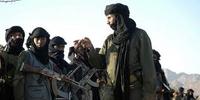-
DHS offers advice on how to survive shooting sprees
For people who get caught in a shooting spree, such as the one in Aurora, Colorado, DHS offers a survival plan
-
-
Critics charge satellite company Inmarsat violates Iran sanctions

A legal organizations specializing in fighting legal battles against terror sponsors – they say their goal is to bankrupt the terror groups and grind their activities to a halt, one lawsuit at a time – warned mobile satellite company Inmarsat PLC against providing prohibited guidance services to Iranian oil tankers and Iranian military vessels; in 2008, a United States Supreme Court ruling made the determination that individuals or companies that materially support terrorist organizations are liable for the murder and injuries they cause, according to Boim v. Holy Land Foundation
-
-
Israel, U.K. worried about “anniversary” Olympic attack by Iranian agents

Forty years ago, during the Munich Summer Olympic Games, terrorists belonging to the Palestinian Black September organization entered the Olympic Village, kidnapped members of the Israeli Olympic team, then killed eleven of them and injured twenty more during a botched German rescue operation; there is worry in Israel and London that Iran, using its own operatives or Hezbollah’s, would try a spectacular 40-year anniversary attack on the Israeli delegation to the games
-
-
U.S. to send hand-launched UAVs to Kenya to help fight Somali al Shabaab
The United States will include hand-launched Raven UAV’s in the $41.4 million military aid package to Kenya; the package also includes trucks, communications gear, and rifles for Burundi, Djibouti, and Uganda; the military aid aims to help east African countries cope with the growing menace of al Shabaab, a Somali al Qaeda affiliate
-
-
Bulgaria attack shows Iran’s terror strategy

The Wednesday suicide-bombing attack by a Hezbollah operative on a bus carrying Israeli tourists on their way to a Bulgaria sea resort, an attack in which six Israeli were killed and thirty-five injured, is an indication that Iran has decided to increase the cost to Israel, and the United States and the West more generally, of a set of policies which have materially undermined Iran’s interests; Iran has built a large network of terror sleeping cells in Europe and the Americas, operated by the Iranian Quds Force, an elite international operations unit within Iran’s Islamic Revolutionary Guards Corps, and by Hezbollah, a network it intends to activate where and when it serves its interests
-
-
Hezbollah suicide bomber kills Israeli tourists in Bulgaria

A Hezbollah-trained suicide bomber, carrying a forged Michigan-issued driver’s license, blew himself up in a bus carrying Israeli tourists, killing seven and injuring thirty-four; the attack appears to be part of a campaign launched by Iran several months ago in retaliation for the killing of Iranian nuclear scientists by the Israeli Mossad; Iranian intelligence operatives have recently attempted attacks on Israeli targets in India, Thailand, Azerbaijan, Kenya, and Cyprus
-
-
Bulgaria bus bombing underscores vulnerability of public transport: MTI experts
The Mineta Transportation Institute’s (MTI) Database on Terrorist and Serious Criminal Attacks Against Public Surface Transportation records 3,159 attacks against public surface transportation between January 1970 and January 2012, in which 7,997 people were killed and 30,046 were injured; of these attacks, 47.4 percent were against buses, bus stations, and bus stops; they accounted for 55 percent of the fatalities and 41 percent of the injuries resulting from terrorist attacks during this period
-
-
The Top 3 Syrian security officials assassinated by rebels
In the heaviest blow yet to the Assad regime, a bomb placed inside the fortress-like National Security headquarters in Damascus earlier today killed the three top commanders of the regime’s anti-insurgency effort: Defense Minster Dawoud Rajha; Deputy Defense Minister (and Assad’s brother-in-law) Assef Shawkat; and Hassan Turkmani, a former defense minister who was serving as head of the regime’s central command unit for crisis management a secure room; the bomb was placed in the secure room, where a meeting of the central command unit for crisis management was taking place, by a bodyguard assigned to Assad’s inner circle; the assassination, and the way it was carried out, demonstrate daring, operational competence, and excellent intelligence; the operation reflects, more generally, a noticeable increase in the lethality and effectiveness of the rebel forces, and the growing vulnerability of the regime
-
-
House designates Haqqani Network as a terrorist organization
The U.S. House of Representative yesterday voted to designate the Haqqani Network as Foreign Terrorist Organization (FTO); the network has been supported and armed by Pakistan, which uses the Haqqanis to attack U.S. and coalition soldiers, aid the Taliban, destabilize the Karzai government, and frustrate U.S. Afghan strategy; if the Senate approves the House bill, this would mean designating the Pakistani government, or at least some of its major agencies, as supporters of terrorism, making it legally difficult for the United States to continue and send billions of dollars in military and civilian aid to Pakistan
-
-
Short-sighted Tuareg leadership dooms independence quest

With the quickening pace of preparations for a military intervention to remove an al Qaeda-affiliated Islamist group from a break-away region of Mali, and disrupt this group’s plan to turn the region into what African leaders call “Africanistan,” the leaders of the MNLA, the Tuareg movement which fought for the independence of the region, said the MNLA would not participate in the operation against the Islamists unless it receives guarantees from outside powers that the goal of the operation will not be to re-unify Mali; the cause of Tuareg independence never had much support among the Tuareg people, and was resolutely opposed by neighboring states; the MNLA refusal to help in removing the Islamists from Azawad all but guarantees that the dream of Tuareg independence will remain just that – a dream
-
-
More generals defecting, worries about Syria’s chemical munitions

A few more Syrian generals defected to Turkey this weekend; the latest defections indicate a growing problem for the regime, as those defecting come from parts of the military where loyalty to the Assad family was key to promotion; among the defectors were two Alawite generals who were operations commanders of the Alawite Shabiha militia, one of the military units closest to Assad, a third general, a Sunni, headed the Syrian chemical warfare authority until 2008; last Thursday, Syria began to move chemical munitions from storage facilities to areas closer to the fighting; the United States informed Syria that Washington would view with extreme concern the removal from storage of any more chemical weapons
-
-
Competition among political forces, not religious fundamentalism, inflames anti-Americanism in the Muslim world

Historically, domestic political divisions within Muslim politics have fallen between secular elite and fundamental Islamic elite factions, with both groups laying claims to anti-American grievances; that competition is most intense not in the most deeply observant Islamic countries, but rather in countries where divisions between secular and religious factions are sharpest; in those countries, competition between political forces — not religious fundamentalism — appears to spark the greatest anti-American sentiment
-
-
Iran could test-fly ICBMs capable of striking U.S. within three years: Pentagon

A Pentagon report submitted to Congress on 29 June says Iran continues to make large strides in virtually all conventional, unconventional, and nuclear categories; the report focused most extensively on Iran’s inventory of ballistic missiles, and warned that Iran may be able to test-fly an inter-continental ballistic missile (ICBM), capable of striking American soil, within three years’ time; Iran also continues to supply men, money, training, and even sophisticated weapons systems to some of the world’s best-known terror groups
-
-
Space radiation detection technology to be used for homeland security
Common radioactive sources emit gamma rays while nuclear bomb material emits both gamma rays and neutrons; because neutrons and gamma rays are electrically neutral, it is difficult to ascertain properties such as the direction of origin or energy level of the radioactive source; University of New Hampshire scientists are re-engineering instruments originally built for detecting radiation in space for homeland security purposes
-
-
Another top Syrian defection signals growing Sunni disaffection

Nawaf Fares, Syria’s ambassador to Iraq, has defected and joined the anti-Assad forces; Fares is also the chief of the Sunni tribe Uqaydat, which controls long stretches of the border area between Syria and Iraq; since 1970, one of the central motifs of the Assad regime – father and son – has been an emphasis on cohesion among the Syrian people in an effort to unify the diverse Syrian society; the regime has enjoyed the support of Alawites, Druze, Christians, and moderate Sunnis; the defection of a second leading Sunni supporter of the regime in as many weeks — Brig. Gen. Manaf Tlas defected last week – is one more indication that Syrian society is fracturing along ethnic and religious lines
-
More headlines
The long view
How Male Grievance Fuels Radicalization and Extremist Violence
Social extremism is evolving in reach and form. While traditional racial supremacy ideologies remain, contemporary movements are now often fueled by something more personal and emotionally resonant: male grievance.
